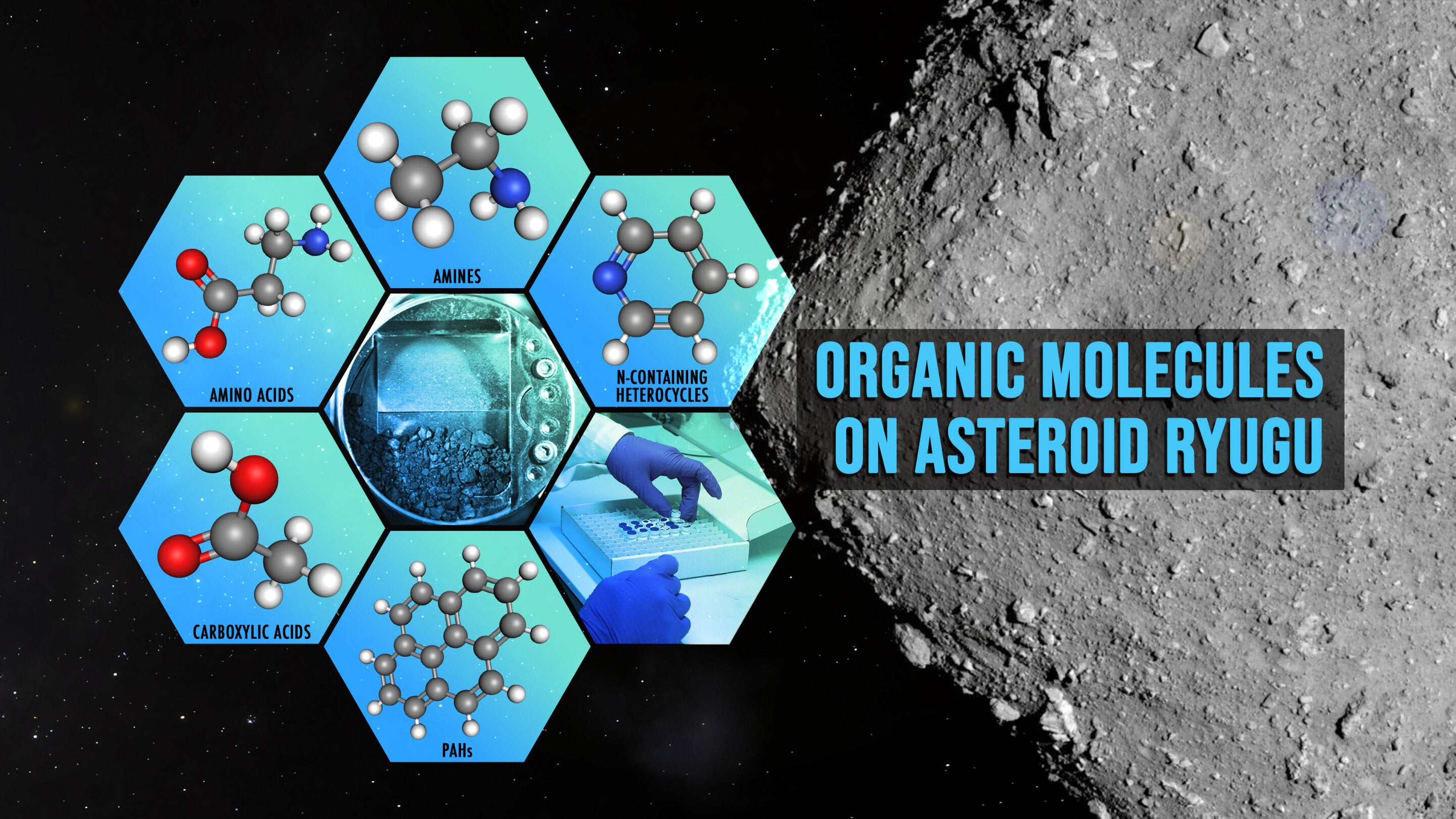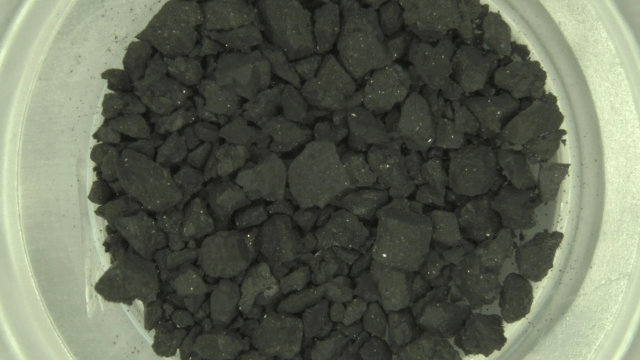Scientists have confirmed that organic molecules exist in samples taken from the asteroid Ryugu, adding credence to the idea that the ingredients for life came to Earth via meteorite and asteroid impacts.
Ryugu is a primitive carbonaceous asteroid, a rocky remnant from the formation of the solar system over 4 billion years ago. Japan’s Hayabusa2 mission visited Ryugu and collected samples from its surface in 2019, providing us with a great way of learning what the solar system was like in its early stages.
A team of researchers has now identified hundreds of thousands of ion signals from the Ryugu samples, which they attribute to numerous organic molecules, including 15 amino acids, amines, aromatic hydrocarbons, and other compounds. Their research is published in Science.
“The presence of prebiotic molecules on the asteroid surface despite its harsh environment caused by solar heating and ultraviolet irradiation, as well as cosmic-ray irradiation under high-vacuum conditions, suggests that the uppermost surface grains of Ryugu have the potential to protect organic molecules,” said Hiroshi Naraoka, a planetary scientist at Kyushu University in Japan and the paper’s lead author, in a NASA Goddard Space Flight Centre release.
“These molecules can be transported throughout the solar system, potentially dispersing as interplanetary dust particles after being ejected from the uppermost layer of the asteroid by impacts or other causes,” Naraoka added.
A lingering question in biochemistry is how the building blocks for life, such as amino acids, arrived on Earth. Organic molecules like amino acids and nucleotides have been found before in meteorites that fell to Earth, but those are inevitably contaminated by the terrestrial environments in which they land.
That makes the Ryugu finding special. The Japanese space agency (JAXA)’s Hayabusa2 snatched clumps of dust, pebbles, and gas from the Ryugu asteroid in 2019, when it was nearly 200 million miles from Earth. The mission brought about 5.4 grams of asteroid samples (about a teaspoon’s worth) to Earth in 2020.

The research team noted that the Ryugu samples were exposed to space and the conditions that come with it, from micrometeoroid impacts to heating from the Sun. “The presence of prebiotic molecules on the asteroid surface suggests that these molecules can be transported throughout the Solar System,” the team wrote in their new paper.
NASA’s OSIRIS-REx mission is currently on its way back from the asteroid Bennu, where it conducted a similar sampling operation.
“We will do a direct comparison of the samples from Ryugu and the sample from asteroid Bennu when NASA’s OSIRIS-REx mission returns it to Earth in 2023,” said study co-author Jason Dworkin, an astrochemist at NASA’s Goddard Space Flight Centre, in the release.
“OSIRIS-REx is expected to return much more sample mass from Bennu and will provide another important opportunity to look for trace organic building blocks of life in a carbon-rich asteroid,” Dworkin added.
Comparing the chemical composition of the two asteroids will reveal similarities and differences between the two rocks and help scientists fill in the gaps in our understanding about ht formation of the solar system.
